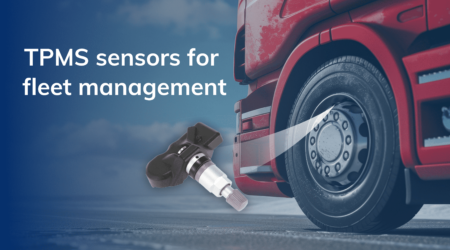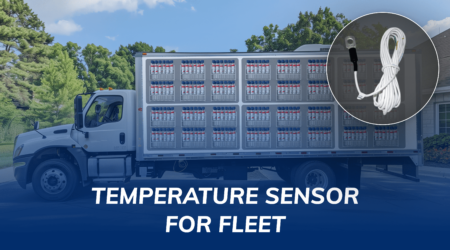Fuel Theft Prevention: How Fuel Level Sensors Can Save You Thousands

Fuel theft has increasingly become a global concern, impacting not just businesses involved in transportation, logistics, and construction but also individuals relying on fuel for daily operations. The repercussions of fuel theft extend beyond mere financial loss; they encompass operational disruptions, increased insurance premiums, and even safety hazards. Amidst this growing challenge, technology offers a beacon of hope. Among various innovative solutions, fuel level sensors emerge as a potent tool in combating fuel theft, promising not just prevention but also operational efficiency and substantial cost savings.
Understanding Fuel Theft
Types of Fuel Theft
Fuel theft manifests in several forms, each presenting unique challenges to businesses and individuals alike. The most primitive yet prevalent method is siphoning, where thieves physically drain fuel from tanks. Adulteration involves diluting fuel with cheaper substances, selling the compromised quality at full price. The digital age introduces cyber-based theft, where hackers manipulate fuel transaction records or steal digital fuel vouchers.
Impact on Different Sectors
The transportation and logistics sector, with its fleets constantly on the move, faces significant challenges in monitoring fuel usage and safeguarding against theft. Similarly, the agriculture sector, with equipment often left in remote areas, becomes an easy target. The construction industry, too, grapples with this issue, given the high-value machinery involved.
Recognizing the Signs of Fuel Theft
Early detection is crucial in mitigating the impact of fuel theft. Unexplained increases in fuel consumption, discrepancies between fuel records and actual stock, and physical signs of tampering on fuel tanks are clear indicators. Awareness and vigilance can aid in the early identification of such activities, setting the stage for implementing more robust prevention measures like fuel level sensors.
How Fuel Level Sensors Work
Fuel level sensors are at the heart of modern efforts to prevent fuel theft, offering a blend of technology and practicality that can significantly enhance operational security and efficiency. Understanding how these sensors work is key to appreciating their value in the fight against fuel theft.
Technology Behind Fuel Level Sensors
Fuel level sensors predominantly utilize ultrasonic and capacitive technologies to measure the fuel level within a tank accurately. Ultrasonic sensors work by emitting ultrasonic waves towards the surface of the fuel. The time it takes for the waves to bounce back to the sensor is then used to calculate the fuel level. This method is highly accurate and non-invasive, making it ideal for various applications.
Capacitive sensors, on the other hand, measure the level of the fuel by detecting changes in capacitance caused by the difference in the dielectric properties of the air and the fuel. As the fuel level changes, so does the capacitance in the sensor, which can be accurately measured to determine the fuel level. This type of sensor is particularly effective for continuous monitoring and is known for its durability and reliability.
Integration with Fleet Management Systems
The real power of fuel level sensors is unlocked when they are integrated with fleet management systems. This combination allows for real-time monitoring of fuel levels across an entire fleet, providing instant alerts to unusual drops that could indicate theft. Additionally, the data collected by these sensors can be analyzed to identify patterns of usage, optimize fuel consumption, and plan more efficient routes that further reduce costs and improve operational efficiency.
Benefits of Using Fuel Level Sensors
Implementing fuel level sensors within a fleet or machinery brings numerous benefits that extend beyond mere theft prevention.
Prevention of Fuel Theft
The immediate benefit of fuel level sensors is their ability to alert fleet managers to any unusual activity in fuel levels, potentially indicating theft. This real-time alert system enables quick action, drastically reducing the chances of significant fuel loss.
Cost Savings
By minimizing fuel theft, businesses can enjoy direct cost savings. However, the benefits don’t stop there. The insights gained from analyzing fuel usage data can lead to more efficient fuel use, better route planning, and even predictive maintenance, further enhancing cost-effectiveness and reducing operational expenses.
Enhanced Operational Efficiency
Fuel level sensors contribute to a more streamlined operation. With detailed fuel usage data, businesses can optimize routes, ensure vehicles are running efficiently, and avoid unnecessary downtime due to maintenance issues, which can be preemptively identified through fuel consumption patterns.
Implementing Fuel Level Sensors
The implementation process is crucial for maximizing the benefits of fuel level sensors. It involves selecting the right sensors, installing them correctly, and adopting best practices for monitoring and maintenance.
Choosing the Right Sensor
Selecting the right fuel level sensor involves considering the specific needs of your operation, including the types of vehicles or machinery involved, the fuel types used, and the environmental conditions. Factors such as sensor accuracy, compatibility with existing systems, and cost will play significant roles in the decision-making process.
Installation Process
Proper installation is vital to ensure accurate fuel level readings. This typically involves mounting the sensor in an appropriate location on the fuel tank, calibrating it to the tank’s dimensions, and integrating it with the fleet management system. Following the manufacturer’s instructions or consulting with professionals is recommended to avoid common pitfalls.
Best Practices for Monitoring and Maintenance
Regular checks and updates to the sensor system are essential for sustained accuracy and performance. Training staff on the proper use and maintenance of fuel level sensors, along with regular data reviews to adjust operational practices, will ensure the system remains effective over time.
Case Studies and Success Stories
The implementation of fuel level sensors across various industries has led to numerous success stories, demonstrating their effectiveness in preventing fuel theft and driving operational efficiencies. Here are a few illustrative examples:
Case Study 1: Long-Haul Transportation Company
A long-haul transportation company faced significant losses due to fuel theft, with drivers siphoning fuel for personal use or resale. After implementing ultrasonic fuel level sensors integrated with their fleet management system, the company could monitor fuel levels in real-time. Alerts were set up to notify managers of any sudden drops in fuel levels, indicative of potential theft. Within months, the company reported a dramatic decrease in fuel losses, saving thousands of dollars and improving driver accountability.
Case Study 2: Construction Equipment Rental Service
A construction equipment rental service struggled with fuel theft from machinery left at unsecured job sites. The adoption of capacitive fuel level sensors allowed for around-the-clock monitoring of fuel levels. The sensors were rugged enough to withstand the harsh conditions of construction sites and provided precise data that the company used to identify and prevent theft incidents. As a result, the service saw a significant reduction in fuel-related costs and increased customer trust due to the transparency in fuel usage.
Case Study 3: Agricultural Co-operative
An agricultural co-operative was concerned about fuel theft from storage tanks and machinery within remote farm locations. By installing fuel level sensors and integrating them with a central management system, the co-operative could track fuel levels across multiple sites. This system not only helped in identifying theft but also optimized fuel distribution among the sites, reducing overall fuel consumption. The co-operative reported savings in both fuel costs and operational expenses, alongside an increase in productivity.
These case studies demonstrate the versatility and effectiveness of fuel level sensors in combating fuel theft and enhancing efficiency. Whether in transportation, construction, or agriculture, these technologies offer tangible benefits and return on investment.
Conclusion
Fuel theft poses a significant challenge across industries, leading to substantial financial and operational losses. However, as we’ve explored, technology—in particular, fuel level sensors—offers a powerful solution to this pervasive issue. By enabling real-time monitoring, providing alerts to potential theft, and offering insights into fuel usage patterns, fuel level sensors can save businesses thousands of dollars annually.
The integration of these sensors with fleet management systems enhances the benefits, allowing for comprehensive oversight and optimization of fuel usage. The result is not only a reduction in theft but also improved operational efficiency, cost savings, and, ultimately, a more sustainable business model.
If your business relies on fuel-powered vehicles or machinery, now is the time to consider implementing fuel level sensors. The initial investment is quickly offset by the savings in prevented fuel theft and the operational efficiencies gained. We encourage you to explore the options available and take the first step toward securing your fuel resources.



